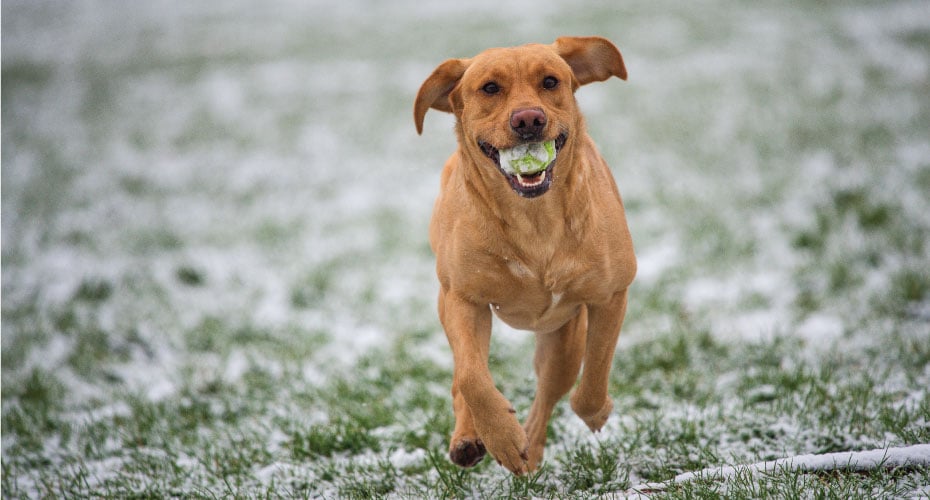
Dogs and humans alike suffer from arthritis. Typically, it affects older dogs, and some breeds are more susceptible than others. Osteoarthritis causes the cartilage between the bones to break down quicker and the rubbing of the bones causes inflammation and pain. Any of the joints in the body can be affected by arthritis, but it is most common in the shoulders, elbows, knees or hips.
Causes of Arthritis
In addition to old age, your dog may develop osteoarthritis due to the following factors:
- Overweight dogs have extra strain placed on their joints which increases their risk of developing osteoarthritis
- As mentioned, certain breeds are more susceptible to developing osteoarthritis. Larger breeds such as Labradors, Golden Retrievers and German Shepherds are more prone to developing osteoarthritis
- Genetics also plays a part in whether or not a dog will develop arthritis
- If a dog sustains an injury, they can also be more prone to developing arthritis in the affected joint/s. This includes repetitive stress injuries that are common in dogs that participate in athletic activities such as flyball, dock diving or agility courses, or after injuries such as fractures or ligament tears
- Dogs that have joint deformities such as hip, knee or elbow dysplasia are also more prone to developing osteoarthritis
Symptoms of Arthritis
The symptoms of early osteoarthritis may not be obvious until the joint becomes extremely painful. It is therefore important to keep up with regular vet visits, especially for dogs that are middle-aged to senior and for breeds that are more prone to developing arthritis. The following symptoms are common in dogs that are affected by osteoarthritis:
Difficulty getting up after laying down, seeming stiff
Slow to walk, reluctance to run, jump or play – general lethargy
Weight gain
Changes in behaviour – biting or appearing to be in pain when touched
Trouble crouching to urinate or defecate – may have accidents in the house
Licking or growling at the affected joints
Diagnosing Arthritis
If your dog exhibits some of the above symptoms and you suspect arthritis, a veterinarian should be consulted who will perform a thorough examination to make a diagnosis. Your vet may order x-rays or other imaging to examine the degree of damage to the affected joints and formulate a treatment plan.
Treating Arthritis
Weight and Diet Management
The first step you can take to relieve some of your dog's discomfort and pain if they are overweight and suffering from arthritis is to put them on a diet.
Regular Exercise
You should also increase your dog's activity level to keep their joints and muscles in good shape.
Changes Around the Home
Your arthritic dog can also benefit from some adjustments around the home. Providing them with a soft, yet supportive bed allows them to rest their weary joints comfortably. There are even specially designed orthopaedic dog beds made from memory foam that are extra supportive and comfortable. If your arthritic dog is a little unsteady on their feet, placing rugs or carpets on slippery floors and stairs can prevent them from sliding around. Your dog may also find a ramp or set of steps helpful when they want to climb up onto your couch or bed.
Prescription Treatments
An injection or medication may be prescribed by your veterinarian if your dog's arthritis is causing them considerable pain. Non-steroidal anti-inflammatory drugs (NSAIDs) are a common medication prescribed to dogs with arthritis as it helps to relieve inflammation and pain.
Non-Prescription Treatments
Green-lipped mussel, glucosamine and chondroitin are common ingredients in non-prescription medications that treat inflammation. Our most popular joint supplements are:
- 4Cyte
- Glyde Mobility Chews
- PAW Joint Protect Dog Chews
- ZamiPet Joint Protect Chews
- Sasha's Flexibites
View all muscle and joint health products for dogs here.
